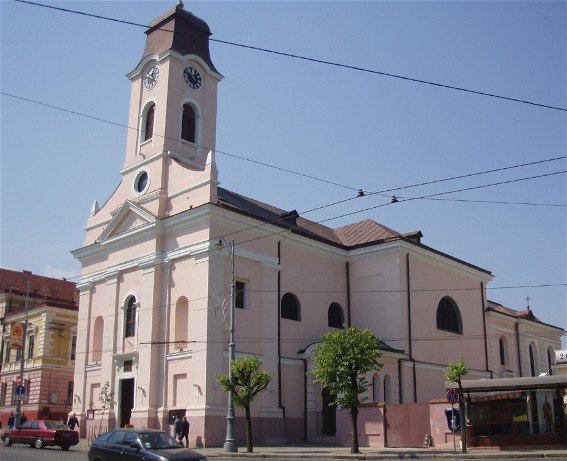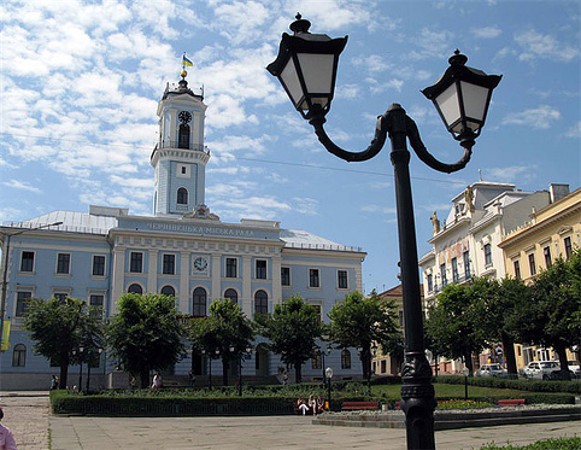Chernivtsi
Chernivtsi [Чернівці; Černivci] (German: Czernowitz; Romanian: Cernauti). Map: V-6. The historical capital and political, cultural, and religious center of Bukovyna and eventually of Chernivtsi oblast. The city (2005 pop 243,500) lies on the border of Subcarpathia and on the boundary separating Ukrainian and Romanian ethnic territories. Situated on both banks of the Prut River, it covers the valley and surrounding hills and has an elevation ranging from 250 m at its highest point to 160 m in the Prut Valley. Chernivtsi is a highway and railway junction and has an airport.
History until 1774. Human settlements at the site of Chernivtsi date back to the Paleolithic Period. Relics of Trypillia culture and Bronze Age and Iron Age settlements have been discovered in the suburbs of the city. Archeological finds in the environs of Chernivtsi give evidence of a Slavic population in the 2nd–5th century AD. In the period of Kyivan Rus’ the area was inhabited by White Croatians and Tivertsians (9th–11th century). The defensive fortifications of Chernivtsi were erected on the left bank of the Prut River in the second half of the 12th century by Prince Yaroslav Osmomysl of the Halych principality. The fortress endured until the middle of the 13th century, when it was destroyed by the Mongols. The new town was built on the high right bank of the Prut. The ruins of the old fortress are still preserved.
From the middle of the 14th century to 1538 Chernivtsi belonged to Moldavia and stood on its border with Poland. The trade route from Lviv to Suceava, which linked Western Europe with the countries of the south and the east, ran through Chernivtsi. The city collected an excise tax (chernovskoe myto), and the earliest reference to Chernivtsi appears in a document of Prince Alexander of Moldavia of 1408 in connection with an excise treaty that he concluded with the merchants of Lviv. In 1488 Chernivtsi became the center of Chernivtsi county. During the Moldavian period the town enjoyed self-government based on Magdeburg law and as a ‘free city’ was directly subordinate to the prince. In the 15th–16th century Chernivtsi was a trade center with widely known international fairs on the left bank of the Prut River. From the mid-16th century, however, the town began to decline economically because of continuous wars and sieges. The town was sacked during the Moldavian-Polish wars in 1497, 1509, and 1688; the Turkish wars in 1476 and 1714; and the Crimean Tatar wars in 1626, 1646, 1650, and 1672. In 1538 Chernivtsi came under Turkish control. The Cossacks, under Tymish Khmelnytsky, came to Chernivtsi in 1650 and 1653. Hetman Ivan Mazepa's troops spent the winter of 1709–10 there after their defeat at the Battle of Poltava. That winter Russian forces, in pursuit of Mazepa and the Swedes, entered the town for the first time, and Chernivtsi was pillaged by both the Swedes and Russians. Russian troops entered Chernivtsi again in 1739 during the Russo-Turkish War, taking with them on their retreat a large number of the town's citizens. As the result of frequent wars and invasions, by the 18th century Chernivtsi had shrunk to a small settlement: in 1762 there were scarcely 200 wooden buildings. Its population of 1,200 consisted of boyars, merchants, moneylenders, and the poor, who revolted against mounting injustices and became social bandits (see Opryshoks) in the 17th–18th century.
1774–1918. During the Russo-Turkish War of 1768–74 Chernivtsi was occupied by Russian troops and then became part of Austria (1774–1918). From the beginning of Austrian rule Chernivtsi was the capital of Bukovyna—as the seat of the military administration at first (1774–86) and of the civil government afterwards. In 1786–1849 the town was the center of the Bukovynian district, a part of the crown land of Galicia, and from 1849 to 1918 it was the capital of the crown land of Bukovyna, receiving full municipal self-government on 8 March 1864. The town's transfer from the Turkish-Balkan to the Central European sphere of influence and its renewed administrative importance led to an increase in its population. By 1779 Chernivtsi had 3,200 inhabitants, and it continued to grow as a result of the influx of Germans (civil servants, teachers, and merchants), Romanians, Ukrainians, Poles, and others. In 1783 craft guilds were established in the town, and by the end of the 18th century industry began to develop. At the beginning of the 19th century various public buildings were constructed: the gymnasium (1813–17), a number of churches, private four-to-five story buildings, as well as a public park in 1830. In 1832 a municipal council, headed by a burgomaster, was set up.
The revolutionary events of 1848 (see Revolution of 1848–9 in the Habsburg monarchy) led to the abolition of serfdom, the establishment of Bukovyna as a crown land, and increasing political competition between the Ukrainians and Romanians in Bukovyna. In the middle of the 19th century Chernivtsi experienced an upsurge in economic development: a brewery, steam mill, distillery, and tile factory were built. In 1850 a chamber of commerce was established, followed by a stock exchange in 1877. Development was stimulated by the introduction of telegraph communications in 1855, the construction of the Lviv-Chernivtsi railroad in 1866, the building of an electric power station in 1895, the establishment of an electric streetcar system in 1897, and the introduction of a water-supply and a sewage disposal system in 1895–1912. Some important buildings that appeared in this period were the Orthodox cathedral, the residence of the Bukovynian metropolitan, the Armenian church, the Jesuit church, and the Jewish synagogue. At the beginning of the 20th century the city theater and the railway station were built. The center of the city acquired the appearance of a European city and was often referred to as ‘Little Vienna.’ In 1895 over 2,500 workers were employed in the factories of Chernivtsi. In 1910 there were 2,140 tradesmen and 1,400 merchants in the town. Chernivtsi was the see of the Orthodox bishop and, from 1873, the metropolitan.
Until 1781 there was only one elementary school (a Romanian one) in Chernivtsi. The Austrian authorities subsequently opened German schools, and by 1869 there were six schools with 26 teachers. The first classical gymnasium was set up in 1808, and the first non-classical secondary school (realgymnasium) in 1862. A teachers' seminary was established in 1870 and expanded in 1872 by the addition of a women's division. In the second half of the 19th century trade schools for agronomy, weaving, and handicrafts were organized. A higher theological school to educate candidates for the priesthood had been in existence since 1827. In 1875 Chernivtsi University was founded. It had three faculties: philosophy, law, and Orthodox theology. The language of instruction was German, but chairs of Ukrainian language and literature and of practical theology and homiletics in Ukrainian were established at the very outset. The university attracted students from both Bukovyna and Galicia. In the secondary schools the language of instruction was German, but in 1851 Ukrainian was introduced as a subject; subsequently it was taught in the teachers' seminary. In 1896 the Ukrainian Gymnasium in Chernivtsi was established. By the end of the Austrian period there were four elementary schools in Chernivtsi with Ukrainian as the language of instruction.
The work of writers such as Yurii Fedkovych, Sydir Vorobkevych, and Olha Kobylianska was closely connected with Chernivtsi. Ukrainian organizations began to appear in Chernivtsi in the second half of the 19th century: the association Ruska Besida in Bukovyna was founded in 1869, the Ruska Rada society in 1870, and the student society Soiuz in 1875. At first a Russophile tendency held sway in these organizations, but in 1884 the populists (narodovtsi)—Yerotei Pihuliak, Omelian Popovych, Stepan Smal-Stotsky, and others—gained the upper hand. From then on the Ukrainian national movement developed rapidly. In 1884 the Ukrainian People’s Home society (see People’s homes) was established, and its building became the center of Ukrainian community and cultural life. In 1887 the educational society Ukrainska Shkola was founded, followed by two economic organizations—the savings and loan association Ruska Kasa in 1896 and the central union of agricultural credit associations Selianska Kasa in 1903—the cultural and educational society Mishchanska Chytalnia in 1880, the Women's Hromada in Bukovyna in 1906, the sports central Sich Union in 1904, the Fedkovych Bursa (students' residence) in 1896 (with its own building in 1906), the musical societies Bukovynskyi Boian in 1895 and Mishchanskyi Khor in 1901, and the Bukovynian People's Theater in 1897.
Until 1914 Chernivtsi was one of the more important Ukrainian publishing centers. Here were published the monthly Bukovinskaia zoria (1870–1); the daily Bukovyna (1885–1918); the monthly Biblioteka dlia molodezhi, selian i mishchan (1885–93); the children's book series Kreitsarova biblioteka (1902–8); Pravoslavnyi rus’kyi kalendar (1874–1918); Haslo (1902–3); the political journals Narodnyi holos (1909–15, 1921, 1923), Narodna sprava (1907–10), Hromadianyn (1909–11), and Borba (1908–14); and literary, student, and teachers' publications.
Chernivtsi was also an important political, cultural, educational, and publishing center for the Romanians, Jews, Germans, and Poles. The German writer Karl-Emile Franzos popularized Taras Shevchenko's poetry, and the historian-ethnographer Raimund Friedrich Kaindl studied the history of Bukovyna, particularly that of its Hutsuls.
During the First World War Chernivtsi was occupied three times by the Russians, in the periods 30 August–21 October 1914, 26 November 1914–18 February 1915, and 18 June 1916–2 August 1917. It was the policy of the occupational regime to persecute nationally conscious Ukrainians, and the situation improved somewhat only after the February Revolution of 1917 when Oleksander Lototsky became gubernial commissioner of Bukovyna. After the Ukrainian Regional Committee of Bukovyna was formed on 25 October 1918, a large public assembly was convened in Chernivtsi on 3 November 1918, which approved Bukovyna's union with the Ukrainian State. On 6 November 1918 the Ukrainians took control of Chernivtsi and appointed Yosyp Bezpalko mayor. Five days later, however, Romanian troops occupied the city, and on 28 November the Romanian General Congress of Bukovyna proclaimed Bukovyna's union with Romania.
1918–44. During the Romanian period, Chernivtsi remained the administrative center of Bukovyna, and in spite of the persecution of Ukrainians by Romanian authorities, continued to be the center of Ukrainian life. New organizations were founded alongside earlier ones: the Bukovynskyi Kobzar musical society, the Ukrainian Men’s Choir, the Ukrainian Theater, and the sport clubs Dovbush and Mazepa. The headquarters of the Ukrainian National party were located in Chernivtsi. The number of Ukrainian publications was severely reduced: the weeklies Borot’ba, Ridnyi krai (Chernivtsi), Rada (Chernivtsi), and Samostiinist’; the daily Chas (Chernivtsi); and the journals Promin’ (Chernivtsi) and Samostiina dumka did appear, but very few books were published. A new building of Chernivtsi University and the House of Culture were erected in this period.
In the 1930s Chernivtsi became an important economic center. In 1936, 155 large and 61 small firms were located in the city, among them 5 mills, 8 large bakeries, 6 distilleries, 7 meat-packing plants, 16 food-processing plants, 21 chemical plants, 18 metalworking plants, 51 textile factories, 6 furniture factories, and 7 printing shops.
From June 1940 to July 1941 Chernivtsi was occupied by the USSR and then by Romania. During the Second World War drastic changes occurred in the national composition of the city's population: in 1940 the Germans were repatriated to Germany, and some of the Romanians returned to Romania. Many Jews perished during the Holocaust. The city was considerably damaged. Ukrainian civic and cultural life was completely disrupted, and many Ukrainian leaders were arrested.
After 1944. After the Soviet Army occupied Chernivtsi for the second time, on 29 March 1944, the political order of 1940–1 was restored. Chernivtsi became the capital of Chernivtsi oblast. From 1956 the city began to be developed along the main arteries, and industrial sections were established in the north, central, and southern districts. In 1956 a natural-gas system was installed. The outlying town of Sadhora was incorporated into the city in 1965, which extended it to the left bank of the Prut. In 1971–3 a new railway bridge was constructed over the Prut River.
Chernivtsi possesses a labor force of over 70,000 workers and 60 percent of the oblast's industry. The major branches are light industry, consisting of the textile complex Voskhod, the clothing complex Trembita, a hosiery complex, three knitting factories, two haberdashery factories, a shoe factory, and a glove factory; the food-processing industry, consisting of a sugar and alcohol refinery, an oil and fats processing complex, a meat-packing plant, and a brewery; and the machine building and metalworking industry, consisting of the light-machine plants Lehmash, Industriia, and Emalposud, an instruments plant, a metalworking plant, and a petroleum-machinery plant. The chemical industry encompasses a rubber-footwear plant and a consumer-chemicals plant. The electronic industry boasts the complex Elektromash. There is also a woodworking industry and a construction-materials industry. Streetcars have been replaced by trolley buses in the city's transportation system.
In 2008 there were 31 general-education schools, with 23,000 students, in Chernivtsi, as well as 7 specialized schools and 10 secondary schools. The six institutions of higher learning—Chernivtsi National University, with 13,000 students; the Bukovyna National Medical University, established in 1944; the Bukovyna National Finance and Economics Institute; the Economics and Law Institute; a branch of the Kyiv National Trade and Economics Institute; and a branch of Kharkiv Polytechnical Institute National Technical University—had an enrollment of over 25,000. Several branches of institutes of the National Academy of Sciences of Ukraine are active in Chernivtsi. The city is the home of the Chernivtsi Regional Studies Museum, an art museum, a museum of folk architecture and folkways, the memorial museums of Yurii Fedkovych (the Yurii Fedkovych Literary Memorial Museum), Olha Kobylianska, and Vasyl Ivasiuk.
Population. Since 1775 the population of Chernivtsi has grown continuously (except between 1939 and 1941, and after 1991), as follows (in thousands): 1775–2.3; 1779–3.2; 1794–5.0; 1816–5.4; 1832–11.0; 1843–16.6; 1851–20.4; 1869–34.0; 1880–45.6; 1890–54.2; 1900–65.8; 1910–87.1; 1919–91.9; 1930–112.4; 1941–78.8; 1959–152.3; 1970–187.0; 1981–224.0; 1991–259.0; 2001–240.0; 2005–243.5. The increase in population was a result of an influx from the countryside and an even greater influx from Galicia, Moldavia, Austria, Germany and (after the Second World War) other parts of Ukraine or the USSR.
After 1775 the city acquired a cosmopolitan character with an ethnically heterogeneous population. Besides Ukrainians and Romanians, Jews, Germans, Poles, and, in smaller numbers, Russians, Hungarians, and Armenians inhabited the city. Until 1918, however, the German language, which was used by the Germans and Jews (together constituting over half of the city's population) and partly also by other ethnic groups, was dominant. The city was the most easterly German cultural center and had the largest proportion of Germans among the major cities of Ukraine. The accompanying table presents the changes in the national composition of the city's population.
The 1941 census reflected the great changes that had taken place at the beginning of the Second World War: the resettlement of Germans and of some Ukrainians, Poles, and Romanians in Germany and Romania, and the influx of Jews from the surrounding areas. During the Soviet period the German and Polish minorities virtually disappeared from the city, and the number of Romanians and Jews declined, while the number of Ukrainians and Russians increased. Today Chernivtsi has the largest percentage of Jews among the cities of Ukraine.
The religious composition of the city's population in 1910 was: Orthodox, 24 percent; Greek Catholic, 11 percent; Roman Catholic, 27 percent; Protestant, 5 percent; and Jewish, 33 percent.
Architectural monuments. The oldest church in Chernivtsi is Saint Nicholas's Church, built of wood in 1607 and restored in 1954. Prominent churches constructed in the 18th century include the stone baroque-style Saint George's Church in Horecha (1767); the wooden Church of the Trinity, built near the village of Mahala in 1774 and moved to Klokuchka in 1874; and the wooden Church of the Dormition in Kalichanka (1783). The city hall, with a 45-m tower, was constructed by A. Mikulicz in 1843–7. Nineteenth-century church architecture is represented by the baroque-style Greek Catholic church (1825–30); the Orthodox cathedral, built in the Byzantine style by F. Röll (1844–64); and the Church of Saint Parasceve, built by A. Pavlovsky in the Romanesque style (completed by 1862). The residence of the Bukovynian metropolitan (now part of the university campus) is the most impressive building in Chernivtsi. It was designed and constructed by J. Hlavka in 1864–82 and combines Romanesque and Byzantine architectural forms with motifs of Ukrainian folk art. In 1956 the residential ensemble, with its 12-ha park, became part of Chernivtsi University. Chernivtsi University was built in 1874–5. The city theater was designed by Ferdinand Fellner and H. Helmer in the Viennese baroque style with elements of the Moderne in 1904–5; today it houses the Chernivtsi Ukrainian Music and Drama Theater. The railway station was built in the Moderne style in 1898–1903. More recent prominent constructions dating from the 1930s include the new building of Chernivtsi University, the House of Culture, and the present building of the Medical University.
The city has many parks and squares, such as the People's Garden (1830), which is now the City Park of Culture and Recreation; the botanical garden; Schiller Park; Fedkovych Park; a wooded park in Horecha; Central Square; Soborna Square; and Theater Square.
BIBLIOGRAPHY
Wickenhauser, F. Bochotin, oder Geschichte der Stadt Czernowitz und ihrer Umgebung (Vienna 1874)
Kaindl, R. Geschichte von Czernowitz von den ältesten Zeiten bis zur Gegenwart (Chernivtsi 1908)
Gronich, J. Album von Czernowitz (Chernivtsi 1925)
Novosivs’kyi, I. ‘Misto Chernivtsi: Ukraïns’kyi natsional’no- kul’turnyi i politychnyi tsentr Bukovyny,’ in Bukovyna - ïï mynule i suchasne (Paris–Philadelphia–Detroit 1956)
Novyts’kyi, L.; Tymoshchuk, B. Chernivtsi: Dovidnyk-putivnyk (Chernivtsi 1959)
Sternberg, H. ‘Zur Geschichte der Juden in Czernowitz,’ Geschichte der Juden in der Bukowina, 2 (Tel Aviv 1962)
Komarnyts’kyi, A. Chernivtsi (Kyiv 1965)
Khokhol, Iu.; Koval’ov, Iu. Chernivtsi: Putivnyk po mistu (Uzhhorod 1967)
Demchenko, V.; Misevych, V. Chernivtsi (Uzhhorod 1975)
Tymoshchuk, B. Tverdynia na Pruti: Z istoriï vynyknennia Chernivtsiv (Uzhhorod 1978)
Valyhura, K. Chernivtsi: Fotoal’bom (Kyiv 1980)
Husar, Yu.; Rozumnyi, S. Chernivtsi: Fotoputivnyk (Kyiv 1991)
Kaindl, R. Istoriia mista Chernivtsi (Chernivtsi 2003)
Tanashchuk, D. Chernivtsi: Khudozhnie vydannia (Chernivtsi 2005)
Chekhovs'kyi, I. Prohulianka Chernivtsiamy i Bukovynoiu: Putivnyk (Kyiv 2007)
Botushans'kyi, V. (ed.) Chernivtsi: Istoriia i suchasnist' (Iuvileine vydannia do 600-richchia pershoi pysemnoi zhadky pro misto) (Chernivtsi 2009)
Arkadii Zhukovsky
[This article was updated in 2010.]
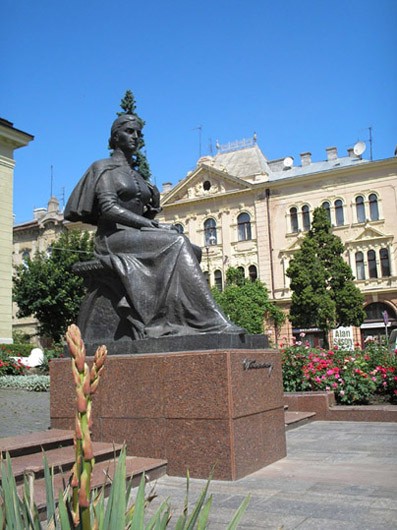
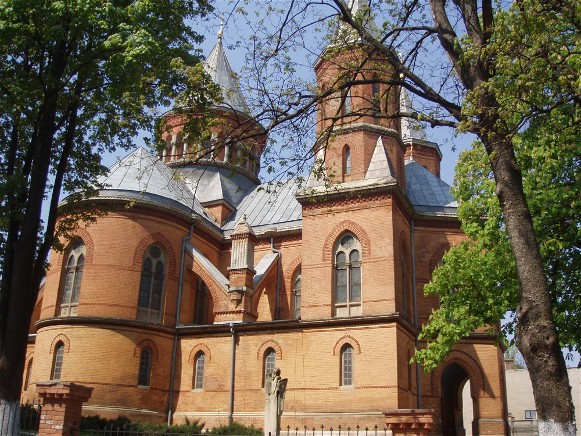
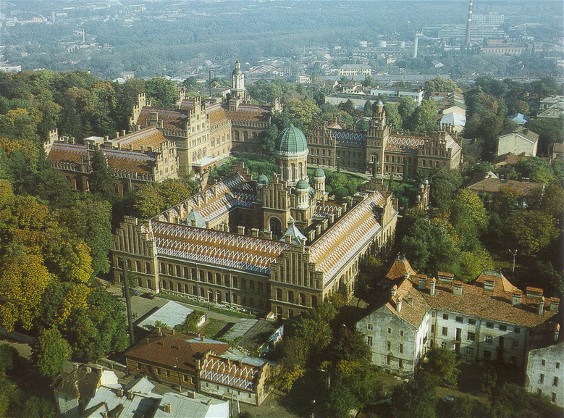
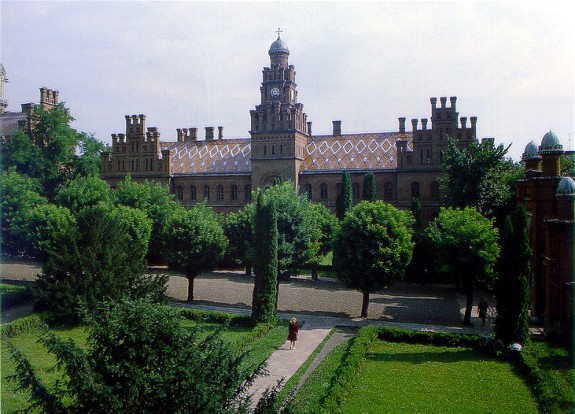
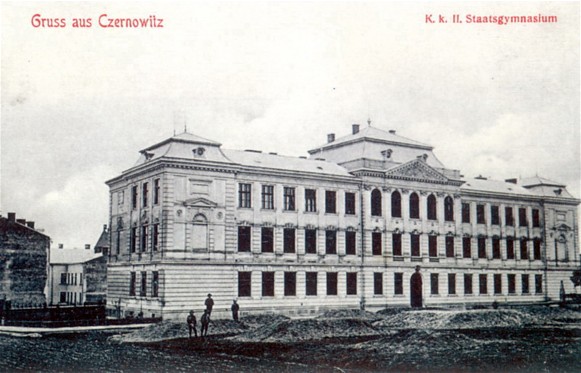
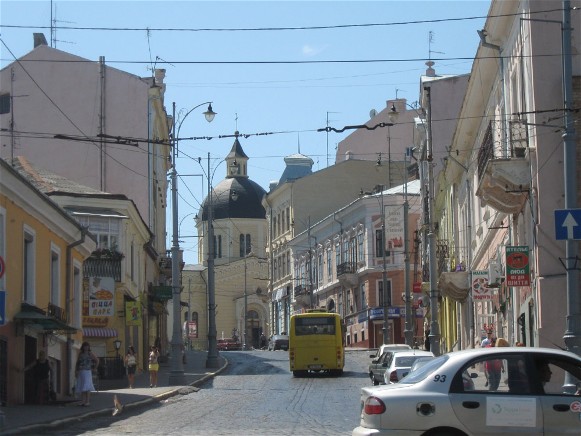
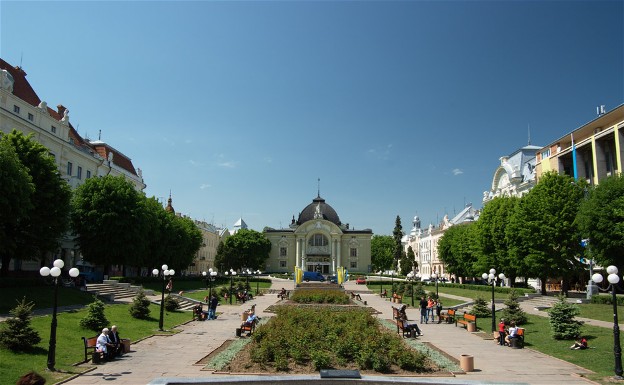
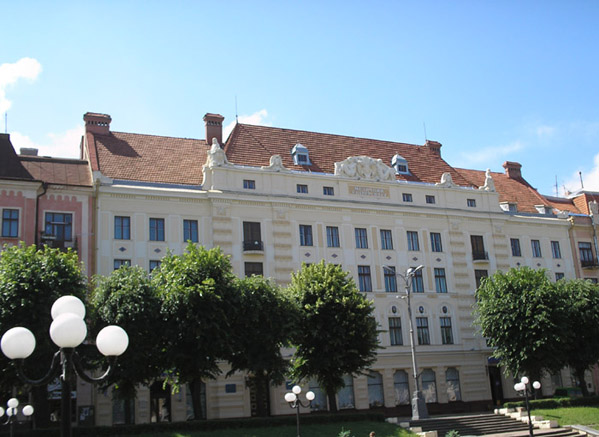
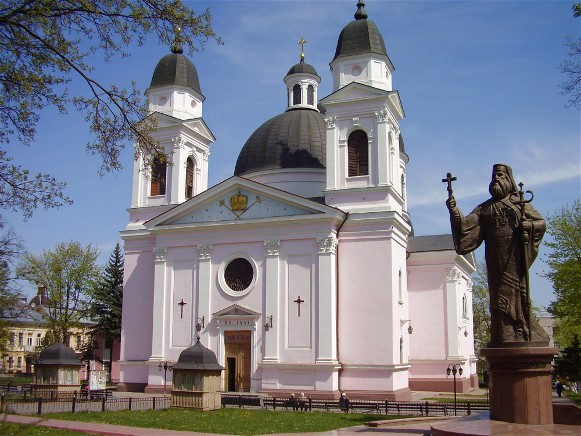
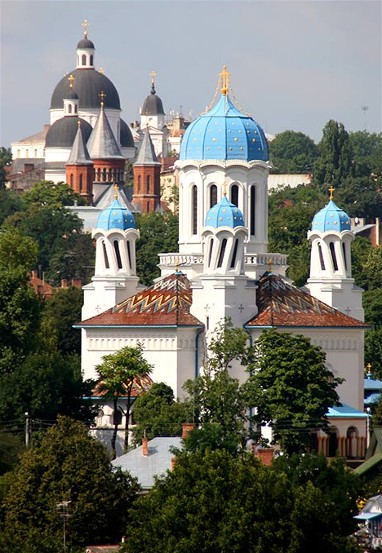
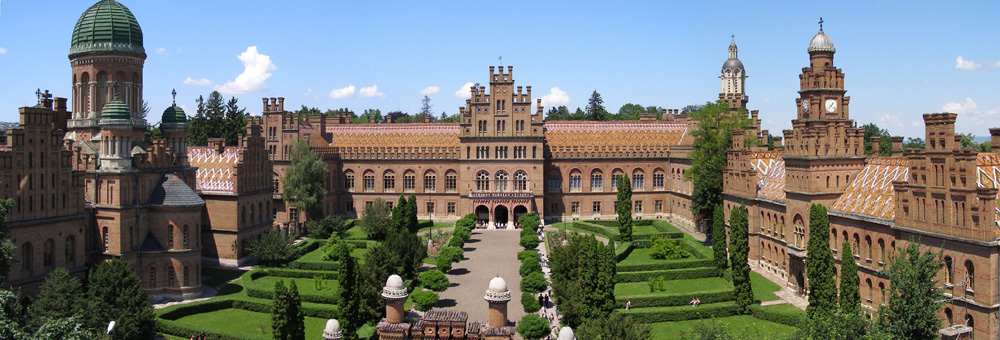
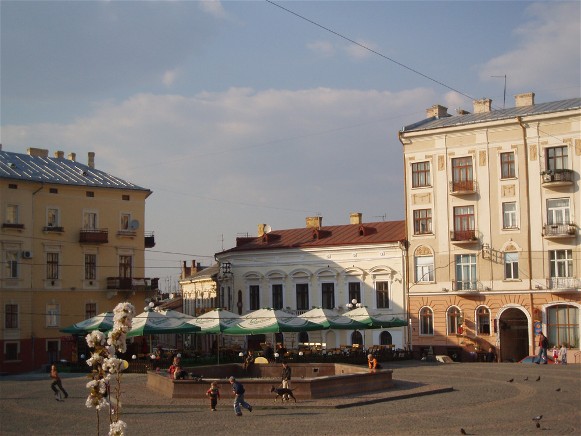
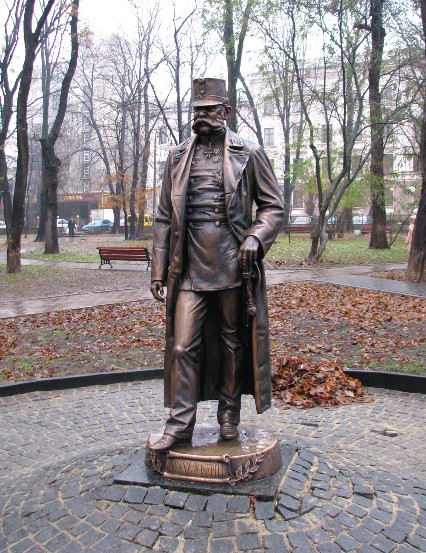
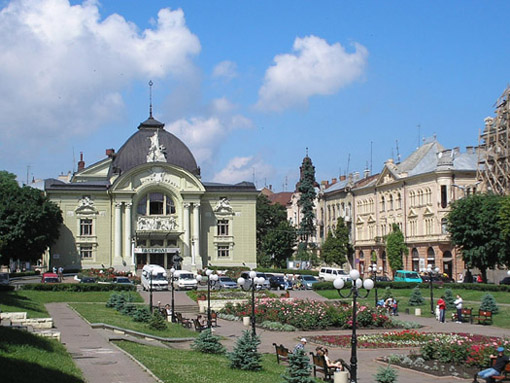
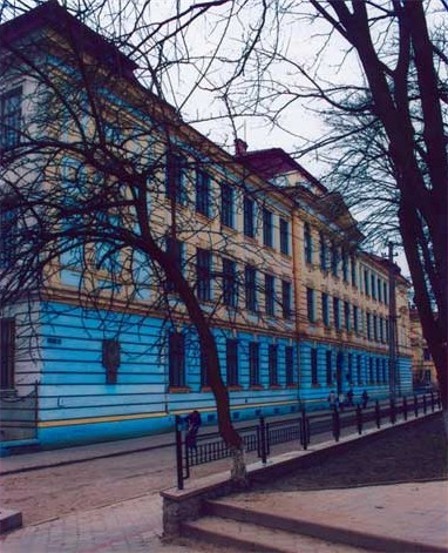

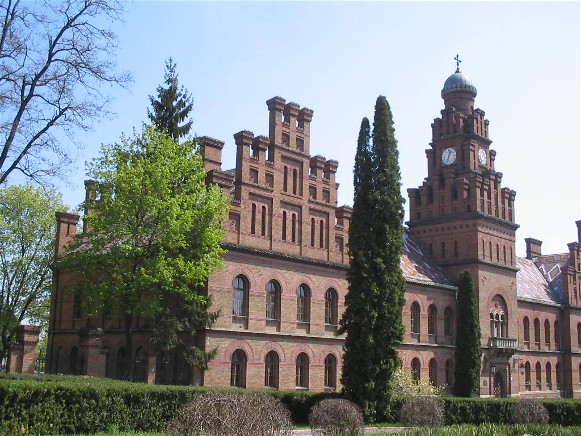
.jpg)
